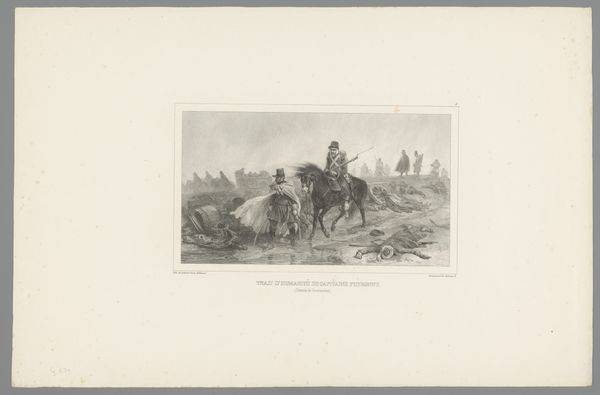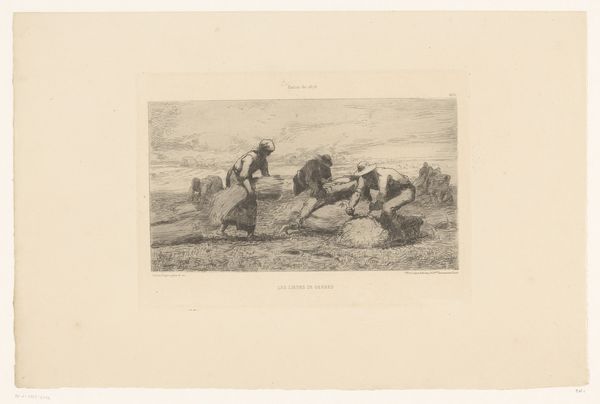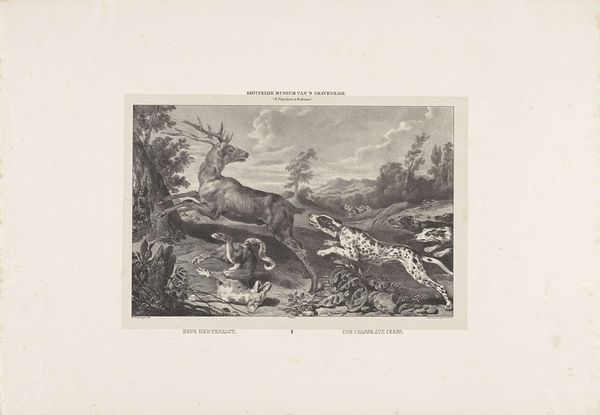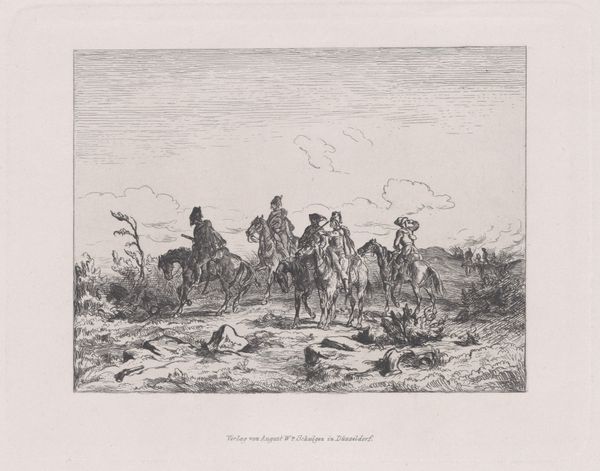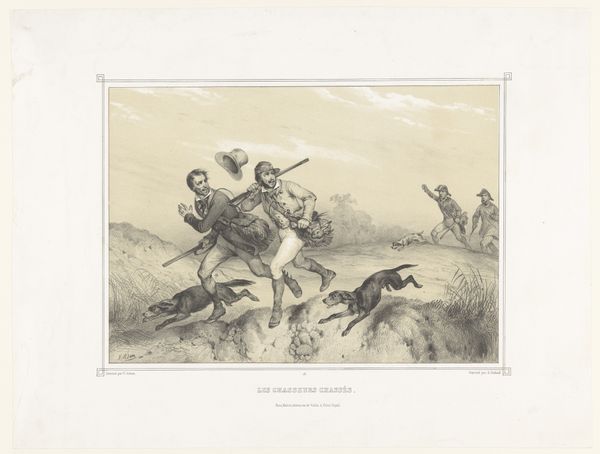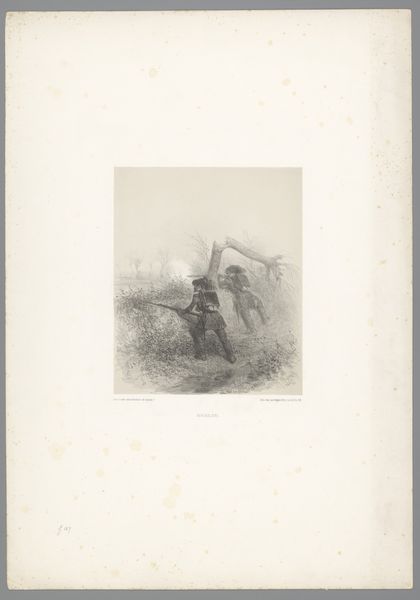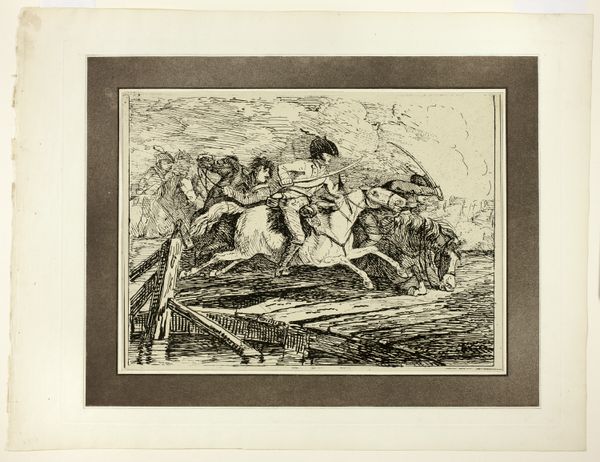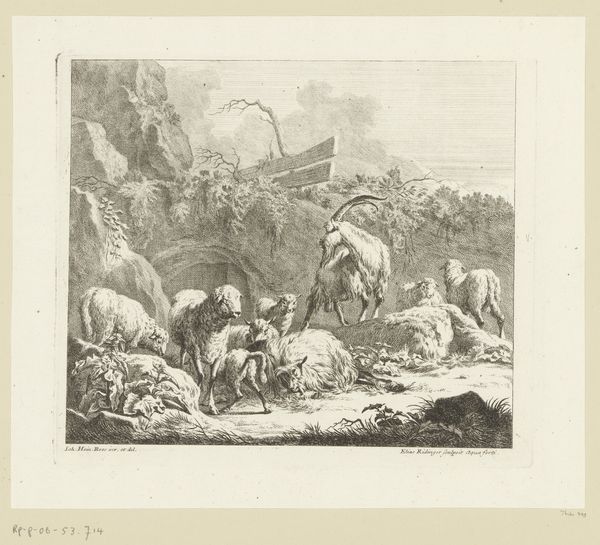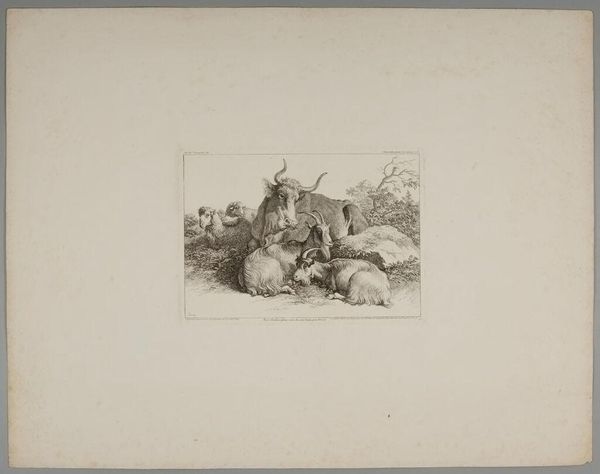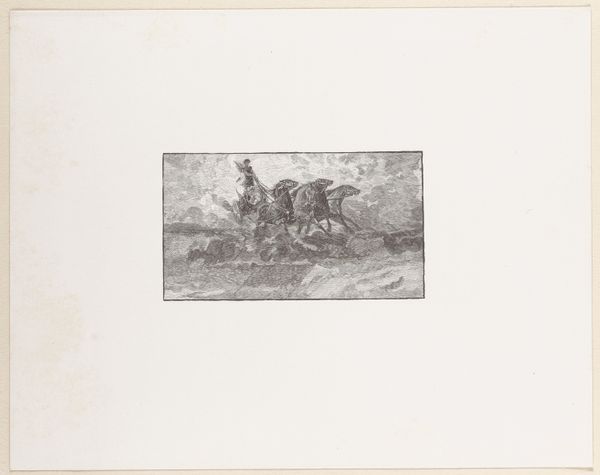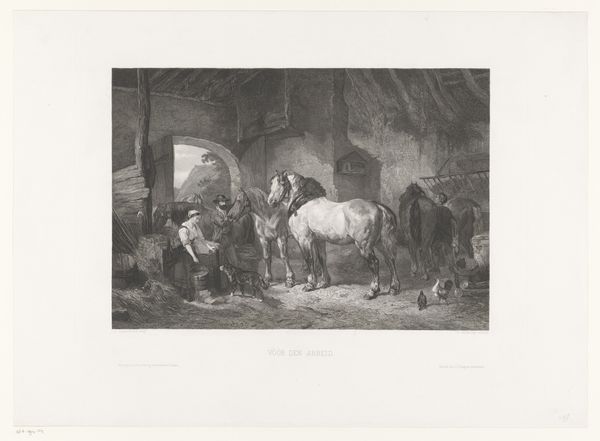
Dimensions: height 448 mm, width 595 mm
Copyright: Rijks Museum: Open Domain
Curator: This engraving, attributed to Fritz Dinger and titled "Wilde zwijnenjacht met honden," captures a wild boar hunt with dogs. It's an etching, placing its creation somewhere between 1837 and 1904. Editor: Immediately, I’m struck by the raw energy! The density of the etched lines conveys the chaotic struggle, a visceral dance between hunter and hunted. There’s a palpable sense of fear, especially emanating from the boar. Curator: Observe the distribution of light and shadow; Dinger's meticulous shading models form, directing your eye through the entangled bodies toward the distant figure with the rifle, doesn’t it? The linear quality of the etched lines lends itself well to describing form and texture in monochromatic terms. Editor: Precisely! This composition highlights a long-standing power dynamic in our cultural imagination—the dominion of humans over the natural world, which intersects directly with the brutal traditions surrounding land ownership, aristocratic entitlement, and ecological devastation. It invites questions about the ethics of our intervention within natural environments, particularly now in light of the escalating climate crisis. Curator: Shifting to technique, the visual language of German Expressionism seems apparent here. There’s an evident intensity in rendering what feels almost like a dance of death. The lack of crisp contour in the overlapping figures adds drama to the narrative. Editor: Absolutely, and I would add that one reading is the societal impact of extractive practices on animal communities and broader ecosystem resilience, prompting conversations on animal rights and conservation strategies. Curator: I note how the limited grayscale palette influences perception here, underscoring the narrative’s solemn and somber dimension. Editor: It all feels stark, perhaps mirroring a harsh, judgmental gaze back onto those who participate in practices which exert unnecessary cruelty onto animal populations. Considering the piece through the framework of environmental justice could bring crucial meaning to this hunt scene. Curator: Certainly a provocative reflection. Focusing on its visual and compositional structure, the carefully executed contrasts bring significant insight to our understanding of pictorial organization during the nineteenth century. Editor: Absolutely! That artistic value is inextricably linked to how we situate these aesthetic encounters and reflect critically on the human impact that they depict.
Comments
No comments
Be the first to comment and join the conversation on the ultimate creative platform.
